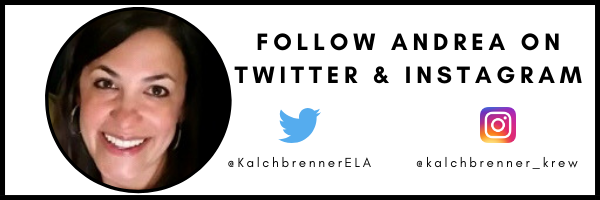TL;DR:
- You have amazing ideas to present at a conference.
- This post shares 3 steps to execute your conference proposals.
- Figure out what you are most passionate about that you could present.
- Gather your ideas and get organized.
- Find conferences that are a good fit for you.
3 Steps to Execute Your Conference Proposals
Visualize this conversation with me…
“Wow! You have so many awesome classroom strategies! Have you ever thought about presenting at a conference to share your ideas with a wider audience?”
“Oh, not really; it’s just a couple of simple things that work for my students and me. I don’t have anything “new” to share that someone else hasn’t already thought of for their classroom…”
You are a talented expert in education; share your wealth of knowledge with others. It might just change someone’s career! Share on XDoes this conversation sound as familiar to you as it did to me? I cannot tell you how many times a colleague has “nudged” me to present at a conference to share something I was doing in my classroom. But every time, imposter syndrome would set in…or straight up self-doubt…or I would make excuses that I was just “too busy.”
However, when I was attending an educational conference as a participant, I would often think to myself, “Hey… I could do this too.” Once I finally convinced myself to take the plunge into presenting, I was left with so many questions on how to get started. What would I specifically present about? How do I write a proposal description? Where should I apply? What information do I need to have ready for my proposal application?
#1: The very first step is figuring out your presentation topic.
This is something that you would think would be the easiest step, but it was actually one of the hardest ones for me. I kept tossing around different ideas but was not “sold” on any of them. Sure, I could talk about differentiation, SEL, tech tools, mastery learning….but so can a multitude of other educators. When you decide on your presentation topic, you have to make sure it is something you are truly passionate about because if you are not 200% into it, your audience will pick up on that instantly. Talk from your heart; the rest is easy!
#2: Once you have selected your topic, the next step is creating your objectives for your presentation and determining who your target audience should be.
Having this information figured out will make your conference proposal much stronger. Then, you can make sure the conferences you are applying to are the best fit for you and your proposal topic. This will increase the likelihood of your proposal being accepted.
[scroll down to keep reading]#3. Lastly, there are so many little things to consider when submitting a conference proposal—making sure you have an updated headshot and bio, what technological needs you might have for your presentation, cost to present, location of conferences you are applying to, travel expenses, and so on.
I know this can seem overwhelming (trust me, I get it), but one thing that really helped me was having a running Google Doc with literally every piece of information I could possibly need when submitting a proposal. By doing this, everything is in one central location. This makes the application process a lot quicker and more manageable.
Rae Hughart and I break down all of these topics and more in our free course “Conference Proposals from Idea to Execution” in the Teach Better Academy. We also share a Conference Proposal template you can use to help you organize all of your information when submitting a proposal.
One last piece of advice is to believe in yourself. You are a talented expert in education; share your wealth of knowledge with others. It might just change someone’s career!
About Andrea Kalchbrenner
Andrea is a Secondary Education English Language Arts teacher from the Chicago suburbs who has a Master’s degree in Reading and is also one of the Ambassador Coordinators for the Teach Better Team. Although she began her career teaching high school 14 years ago, she soon realized middle school was her true calling, spending the majority of her time teaching seventh grade.
Andrea is passionate about making reading and writing come alive for her students every single day by immersing her students (and herself) in all things related to ELA! She runs a mastery learning classroom utilizing The Grid Method framework with a focus on social-emotional learning.
As an Ambassador Coordinator, she has the amazing opportunity to network with other inspiring educators from across the world on a daily basis. Outside of the education world, Andrea is a professionally-trained dancer who enjoys sharing her love of dance with aspiring ballerinas. Out of all of her roles, though, Andrea’s greatest role is being a Mom to her two children




